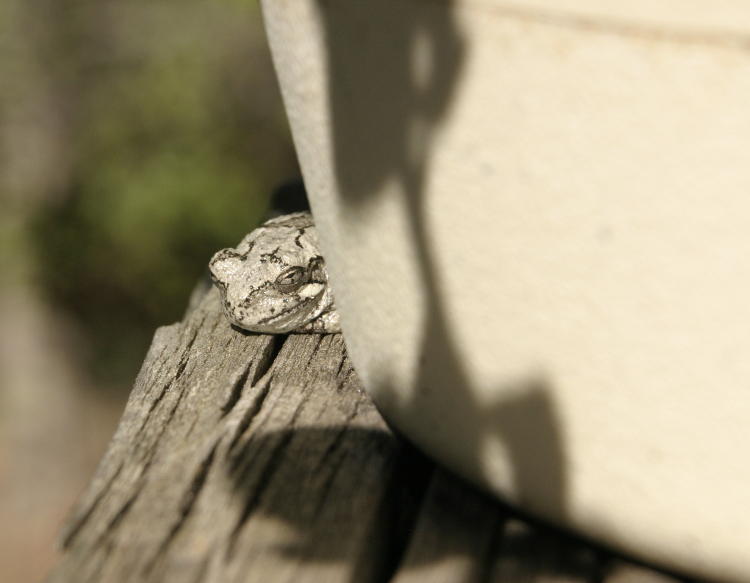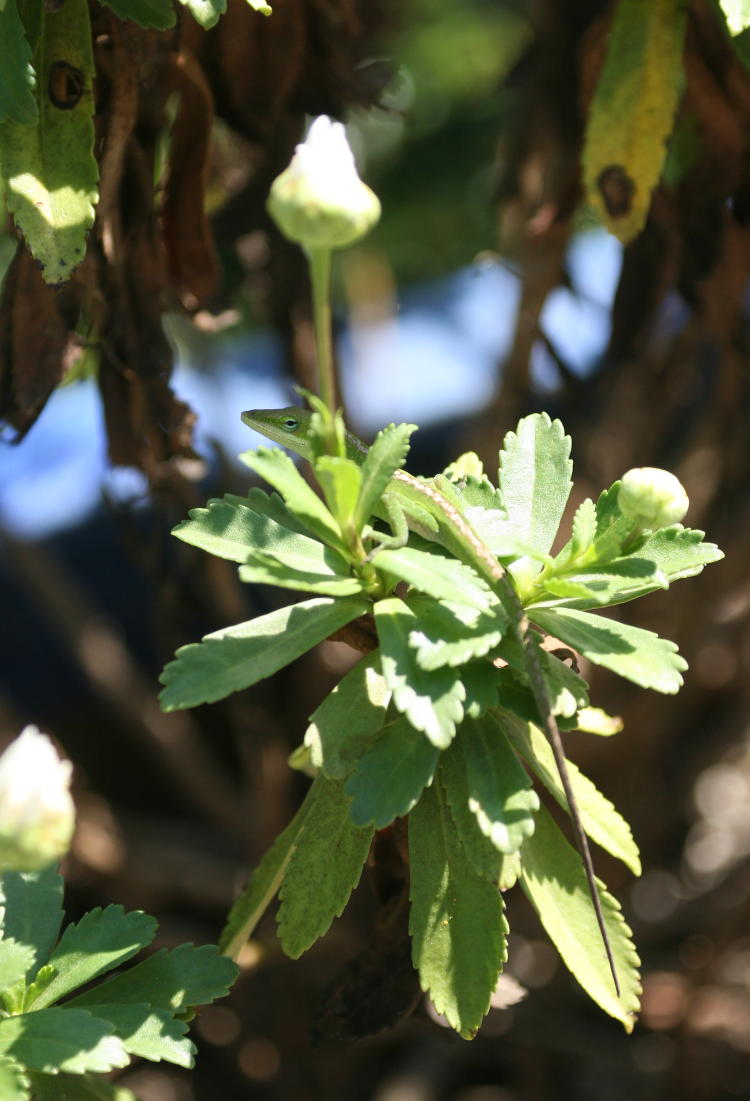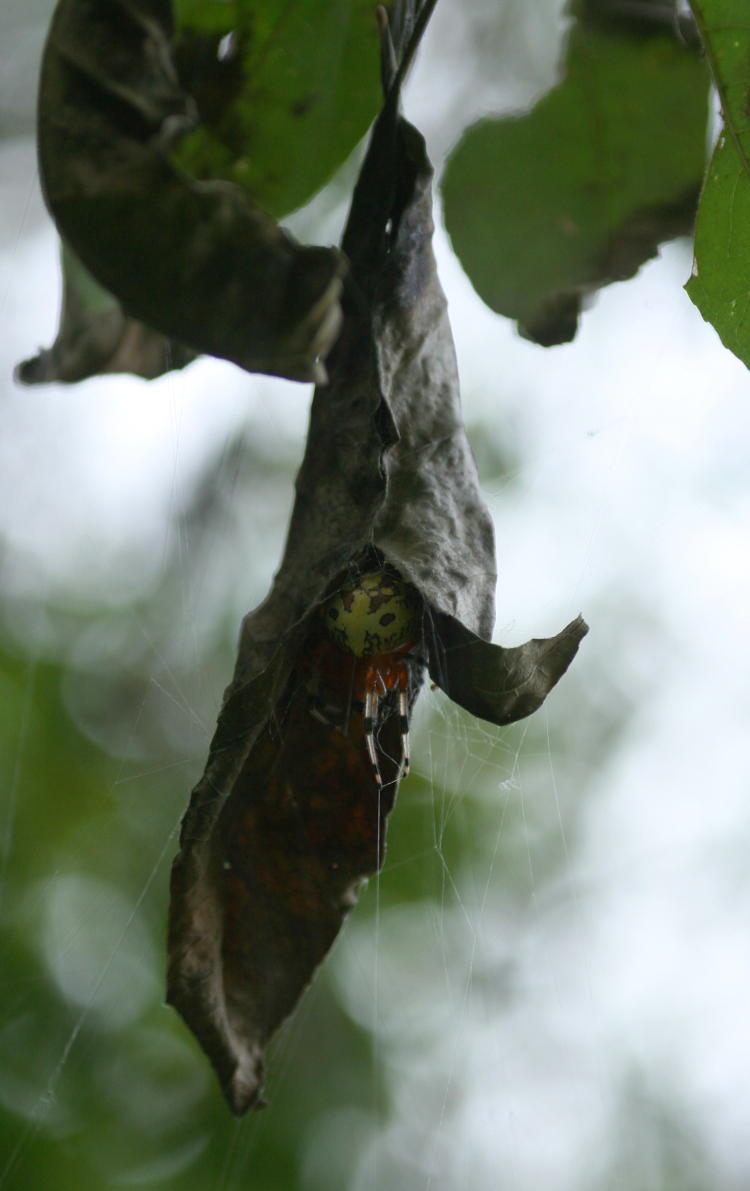
It would appear that we’ve entered the slow season now, at least if the numbers of the images in my date spreadsheet are any indication, so not a lot to offer this week – next week will be worse, because I’ve already peeked. For now, we hearken back ten years, to the first little Copes grey treefrog (Hyla chrysoscelis) to take up residency with me, alongside a potted plant on my deck railing. The deck faced a set of sliding glass doors into the office, where I would often be up late at night, so even though the blinds were closed, there was light to attract insects; the frog knew what it was doing. A day or so later, it would reciprocate by providing one of the cutest poses (it took me a while to post it,) even running as a gallery print now.
[I identified it there as a common grey treefrog, but since then I have only found the Copes variety in the area, so I now think it’s most likely one of those. The differentiation can only be done easily by the pitch of their call, which this one never performed for me, and they’re otherwise identical. So, you know, call it whatever you like, no one’s going to correct you…]

We then jump forward to 2014, in the NC Botanical Garden I believe, but why exactly I decided to shoot this plant I’ll never know. I mean, it’s not too healthy-looking, and the bud’s out of focus, and… oh, yeah, there we go.
On the same date, from Mason Farm Biological Reserve (which is almost attached to the Botanical Garden, and administered by the same organization,) we have… a dead leaf.

No, wait, we learned our lesson a moment ago, so, yeah, there’s the real subject. And take it from me, it wasn’t small. I rarely see marbled orbweavers (Araneus marmoreus,) but when I do, they’re always sizable, this one having a body larger than a typical marble. I’m guessing that, like the barn spiders, they’re nocturnal, hanging out in their ‘cartwheel’ webs by night but sheltering away from the birds by day. So this is why you always crawl underneath any dead leaf you see; you’ll never know what’s waiting for you there.




















































